In Advanced Google AdWords, Brad Geddes wrote, “Wouldn’t you like your ads to be sought after, not ignored?”
That’s the ultimate goal, right? To craft a PPC ad that’s so compelling people are happy to click it. It doesn’t happen often.
If PPC has been around since 1996, why doesn’t it happen more often? Why haven’t advertisers perfected the process? Because the landscape is constantly changing. What you learned 6 months ago could already be outdated information.
There’s always a new mistake to make.
The Current State of PPC
According to Hanapin Marketing’s 2015/2016 State of Paid Search Report, most people feel pretty good about their PPC campaigns…
Not only 78% of marketers feeling “really good” about their PPC success in 2015, but 60% believe the PPC market has improved over 2014.
However, we’re currently at a turning point in the PPC industry for four distinct reasons: targeting options are improving, CPC (cost per click) is rising, mobile advertising is gaining more attention, and the way we define success is changing.
1. Targeting Options Are Improving
Companies know more about you than ever before. They know who you are, what you like, what you searched for last night, what you’re looking for, how motivated you are to find it, etc. Hell, Facebook knows whether you vote liberal or conservative and whether or not you attend church on Sundays.
As a result, targeting options are becoming more and more advanced. Gone are the days of advertising to everyone in San Francisco, California. Now, you’re running ads to everyone in San Francisco who has visited your site in the last 30 days and recently changed jobs.
While some platforms (ahem, Facebook) already have advanced targeting options, others are focused on quickly catching up. Brad Geddes of AdAlysis explains…

Brad Geddes, AdAlysis:
“It’s going to be the year of Google trying to catch Facebook in allowing advertiser’s to target users by more than just keywords or basic contextual targeting and allow a lot more interesting paramaters to be used.” (via Acquisio)
As targeting improves, the need to understand your audience and the segments that actually convert grows exponentially.
2. CPC Is Rising
When PPC first took off, it was praised as an affordable way for small businesses and scrappy marketers to avoid big advertising budgets via traditional channels. Now, however, CPC is rising, especially for search.
That means PPC is becoming more complicated for two reasons…
- The small businesses and scrappy marketers are getting pushed out.
- You have to be more creative with your choice of keywords.
Lisa Raehsler of Big Click Co agrees…

Lisa Raehsler, Big Click Co:
“Keyword search has been a dependable stand-by, but with rising CPCs, small and medium sized business advertisers are finding it’s too difficult to rely solely on the traditional keyword search and compete with the ‘big guys’.” (via Acquisio)
3. Mobile Advertising Is Gaining More Attention
According to BIA/Kelsey, there will be over 110 billion U.S. local search queries in 2016…
Compared to 85.6 billion desktop search queries…? It’s clear that mobile is gaining popularity. But that shouldn’t surprise anyone.
Yet, many advertisers are continuing to simply push their desktop ads to mobile. Since the intent, motivation level and behavior of mobile users is so vastly different, that makes little to no sense.
Here’s Brad to explain the problem and propose a solution…

Brad Geddes, AdAlysis:
“As mobile searches continue to rise, we’re going to see companies think about mobile touchpoints and their ads differently than their desktop ads and touchpoints. Right now, most companies are just using their desktop ads on mobile devices and call[ing] it good. The best companies are going to start testing mobile ads and pages completely seperately from their desktop ad and page tests.” (via Acquisio)
Earlier this week, I wrote an article on mobile UX optimization. While it’s not specifically written for PPC advertisers, I think you’ll find it helpful in understanding how mobile and desktop traffic behaves differently.
Just as we need to completely rethink sites for mobile users, we must completely rethink ads for mobile users.
4. The Way We Define Success Is Changing
At CXL, we’ve covered cross-device pollution and testing / measurement pretty thoroughly. The same concept applies to PPC, of course. A paid ad could be what triggers a decision, but the actual conversion could take place online, for example.
When this happens, the PPC campaign doesn’t get the credit because there’s simply no way to track it.
It’s a universally understood flaw and there are indications that ad platforms are working on a fix. As a result, the way we think about PPC success will likely shift in the near future. Instead of focusing exclusively on click-based results, we’ll have more comprehensive data, which will allow us to create more engaging ads.
Aaron Levy, Manager Of Client Strategy at EliteSEM, concludes…

Aaron Levy, EliteSEM:
“On the tracking front, we PPC-er’s have long been conditioned to click-based action tracking. Users click on our lovely ads, go to our elegant landing page, fill out the form or run through checkout and we win!
The problem (which advertisers and engines alike recognize), is this method greatly undervalues the offline influence some of these search ads can have.
Making a purchase decision online and heading into store, (reverse showrooming if you will), calling a company direct or going through alternate channels tends to lead to a dramatically leaking bucket. Even existing tools like YouTube and Display (where clicks are notoriously difficult to come by) are undervalued because we’re tied to a click-based action. Instead, I predict 2016 will be the year of alterna-metrics.” (via Acquisio)
Despite the rapidly changing landscape, PPC advertisers are confident and plan to increase their annual spend in 2016. In fact, 43% plan to spend over 2.5 million…
Rising PPC budgets seems to be somewhat of a trend. In 2015, Over 70% of respondents reported increasing their budgets. Where will that increased spend go? Mobile, AdWords and Facebook are among the most popular choices…
When asked about the most important PPC channels, respondents proved that text ads, remarketing ads and mobile ads still reign supreme…
But the number of PPC channels available is growing quickly and others are beginning to gain ground. Display ads and shopping ads are not too far behind mobile ads…
When asked about the most important aspect of digital marketing in 2016, respondents were fairly evenly split between conversion rate optimization and social advertising…
That’s not surprising given the depth of targeting social advertising allows and the role CRO plays in PPC. Without optimization, advertisers might as well be sending their ad traffic to a blank page.
Though the Hanapin Marketing report found that PPC advertisers are confident in their abilities, it’s clear that we still have a long way to go. For example, here’s what came up when I searched for “toronto car insurance”…
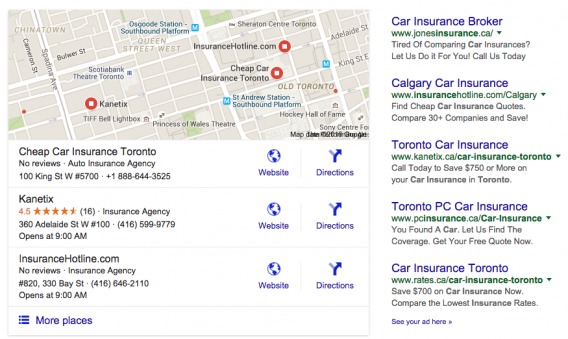
I’ll be sure to call Insurance Hotline the next time I’m in Calgary. (Note: They actually do have a Toronto service offering, upon further research.)
7 Common (and Costly) PPC Mistakes
PPC can be quite complex, so the mistakes people make are endless. However, there are some PPC mistakes that advertisers make more often than others. And there are PPC mistakes that cost advertisers more money than others.
Here are a few of them (and how you can avoid making them yourself).
1. Not Understanding the Difference Between Search, Display and Social
Here’s what Ally Sabrowsky of Hanapin Marketing, which is the agency behind PPC Hero, has to say about the most common (and costly) PPC mistake…

Ally Sabrowsky, Hanapin Marketing:
“Not understanding the difference between search and display and social, for example, could turn into a costly PPC mistake.
Search has intent behind the action so searchers might be familiar with the brand but are looking to find out more or convert.
Display is a completely different audience as they might not have any recognition of the brand or even be actively looking for your product or service.
Social could be both of the above but could appeal to an audience that has loyalty to your brand so presenting them with a unique experience is important to capture what they’re looking for.
To correct this type of mistake, treat your audiences as different buckets and provide them with a more specialized experience depending on their interest or intent. Whether it be through language in the ads themselves or a specialized landing page experience, make sure you tailor to your audience types.”
Ally is essentially reminding everyone of the importance of segmentation. Just as mobile traffic and desktop traffic behave differently, the different types of PPC traffic behave differently as well.
Common characteristics of search traffic…
- High intent and level of motivation.
- They’re actively looking for a solution.
- More likely to respond to a hard sell.
- Will likely need only the essential product / service information.
- Needs a frictionless experience.
Common characteristics of display traffic…
- Low intent and level of motivation.
- They may not even be aware of the pain point your product / service addresses.
- More likely to respond to a soft sell.
- Will likely need comprehensive product / service information.
- Needs to be persuaded.
Common characteristics of social traffic…
- Could be high or low intent / level of motivation, but likely leaning towards low.
- They may not even be aware of the pain point your product / service addresses, but you can be fairly certain they have it based on advanced targeting options.
- More likely to respond to a low-effort sell (e.g. submit an email).
- Will likely only need comprehensive product / service information if the sell is high-effort or high-priced.
- Needs a consistent experience (copy and design) from social to the landing page.
Of course, segmentation doesn’t end here, but it’s a good starting point. Be aware of how traffic behave differently. Don’t try to serve everyone the same ad / experience.
2. Marching Forward Without a Strategy
Jen Salamandick of Kick Point Inc. builds on Ally’s segmentation argument…

Jen Salamandick, Kick Point Inc.:
“Jumping into PPC without a clear understanding of goals, and a strategy to make those goals a reality is a costly mistake that we see clients trying to bounce back from quite often. An important part of a PPC strategy is defining your audience.
If you haven’t taken the time to determine who your ads are for, then how will you know how to write them? How will you build landing pages to encourage your target market to do whatever it is that you want them to do?
Personas get a bad rep from people who haven’t taken the time to use them properly, but if you employ them to segment your campaigns and ad groups by audience and intent they can be very powerful.”
Before you can write ads and create conversion funnels that work, you need to step back and look at the bigger picture. It all starts with goals and a strategy. A key part of the strategy being defining (and understanding) your audience.
Personas is one way to do it. But a persona is not…
A persona is created using qualitative and quantitative research, not using Myers-Briggs.
Jen Havice of Make Mention Media wrote an incredible article for CXL on creating data-driven personas, How To Create Customer Personas With Actual, Real Life Data. It’s worth the 8-10 minute read if you’re interested in understanding the people viewing your PPC ads (and you should be).
Start with the qualitative research and then fill in the blanks with quantitative research.
3. Focusing on the Wrong Metrics
When asked what he thought the biggest (and most costly) PPC mistake is, Johnathan Dane of KlientBoost focused on metrics…

Johnathan Dane, KlientBoost:
“Not optimizing off of sales and tracking back to what keywords and placements are actually making you money. Too many people focus blindly on optimizing off of conversions, but not all conversions are equal.
Using your CRM (if you’re generating leads or a SaaS business), you can use something called Google ValueTrack parameters that can give you all the insight you need to know.”
Measuring results as close to the money as possible is key. Your focus should be on identifying the types of people who make you money, understanding their motivations and behavior, and optimizing to reach more of them.
Using Google ValueTrack parameters, you can uncover data and make smarter optimization choices.
When you add Google ValueTrack parameters to your landing page URLs, they collect information about the source of your ad clicks.
For example, you might add {matchtype} as a ValueTrack parameter. When the ad is clicked, Google will record the ad’s match type as either b (broad match), p (phrase match) or e (exact match).
You can also use IF functions. For example, let’s say you want to know whether or not someone arrived on your landing page from the Search Network, add {ifsearch:} as a ValueTrack parameter. In Google Analytics, you’ll see “search” if someone clicks on your add from the Search Network.
For more ways to use Value Track parameters, click here.
Be sure you have your analytics set to record the most useful data possible. You don’t want to optimize for CTR or conversion rate. You want to optimize for more money in the bank.
4. Using “Bid Only” in Remarketing Display Campaigns
Ryan Moothart of Portent gets a bit more tactical…

Ryan Moothart, Portent:
“Using ‘bid only’ targeting settings in a remarketing display campaign. The goal of a good remarketing campaign on the display network is to target ads to users who’ve been to your site before. To do this, you create an audience of users and target it in AdWords. However, if you forget to set the targeting setting to “target and bid” instead of “bid only”, you’re essentially telling Google to target the users in your audience along with anyone else Google feels like targeting.
If you set your budget very high to ensure you maximize your impression share of these users, and then accidentally use the “bid only” targeting setting on your remarketing audience, you could easily waste a ton of money showing ads to users you never meant to target in the first place. The solution is to ensure any remarketing audience in a display campaign is set to “target and bid”, which limits Google to showing ads only to users in your audience.”
This one is pretty straightforward. It’s a lesson in paying attention, understanding key PPC terms and triple checking your campaigns before pushing them live.
It seems like common sense, but the mistake is costing inexperienced marketers big time.
5. Using “Broad Match” on Short-Tail Head Terms
Ryan adds that the match type you select can have a big impact on your results and the amount you have to spend to achieve those results…

Ryan Moothart, Portent:
“Using broad match on short-tail head terms. If you want to show ads for a high volume, high competition keyword, you want to avoid broad match unless you have an absurdly high budget. Example: if you sell shoes, you may want to avoid bidding on the keyword shoes in broad match; you’d end up spending a metric crap ton of money in a very short amount of time without many conversions to show for it.
If you want to have coverage for these types of terms, stick with exact match and utilize all available bid modifiers (mobile, geographic, ad schedule, etc.) to help ensure any ads you show for these keywords are going to be as effective as possible.”
Now, there are three different match types for search:
- Exact Match: The exact term or very close. With exact match, you’ll end up with long keyword lists.
- Broad Match: Your ads may show on searches that include misspellings, synonyms and other related searches. You’re essentially giving AdWords the benefit of the doubt.
- Phrase Match: The phrase or a close variation of the phrase. This has been more or less replaced by Broad Match Modified, which means our ads will show on searches that contain the modified term (or close variations, but not synonyms) in any order.
It’s naive to choose just one. You should use multiple match types, depending on your intent.
Recently, PPC Hero analyzed October 1, 2014-September 30, 2015 AdWords data from Hanapin Marketing’s clients. They were hoping to explain how match type impacts performance.
Only non-branded keywords with one or more clicks are included in the data.
When looking at how much was being spent on each type, they found that broad is heavily favored…
Phrase trails behind. Again, likely because it’s essentially been replaced by Broad Modified Match.
When they looked at CTR, exact led the pack… by a lot (5.53% vs. 2.73%) . That shouldn’t be too surprising given exact means more relevancy, higher bids and, generally, higher rankings.
Here’s where it gets interesting: conversion rate and IUC (impressions until conversion)…
The conversion rate difference is negligible. While IUC is dramatic, it’s mostly due to exact’s high CTR. Exact has the advantage of specificity, which allows you to target people at later stages of the conversion funnel.
Note that this is the intersection of PPC and CRO. Conversion rate is essentially the same across all three types. Optimization could make all the difference here.
Back to what Ryan was saying. Using broad match on short-tail head terms will get expensive fast. Stick with exact match and take advantage of bid modifiers instead.
Always be aware of your options and choose strategically.
6. Not Testing Your Conversion Funnel Beforehand
Ryan also suggests paying closer attention during the quality assurance phase…

Ryan Moothart, Portent:
“Forgetting to test your site’s conversion funnel prior to starting a campaign. If you don’t process a test conversion and check your analytics prior to running a PPC campaign, you have no idea if it’s working correctly or not. For example, you could start a campaign and waste thousands of dollars before realizing the users you sent to your site couldn’t buy anything from you in the first place because something was broken in your checkout process.
Always test conversions and analytics prior to launching any PPC campaign and confirm everything works properly.”
Quality assurance is a basic principle, but it often gets ignored for the sake of speed. Most advertisers run through the site’s conversion funnel once and declare it “ready to go”. Instead, they have to slow down and make sure everything is really working the way it should be.
Why run paid traffic to a site with a broken or confusing funnel? Why run paid traffic to a site that doesn’t work properly in IE? Why run paid traffic to a site with a broken analytics setup?
Here’s what you should do before running your campaign…
- Conduct a heuristic site analysis. Is there distraction? Do you have clarity issues?
- Conduct user testing. Commission a few user testing videos and watch as real people perform tasks on your site. It’s an easy way to spot friction and improve your funnel.
- Conduct cross-device and cross-browser testing. Use Google Analytics to analyze your traffic by device and browser type to see where you should begin. With Google Chrome, you can use Inspect Element to see how the site looks on different devices.
- Conduct a Google Analytics health check to ensure your analytics are tracking and reporting correctly.
7. Writing Emotionless Ads
Larry Kim of WordStream explains why one of the biggest mistakes is still simply writing emotionless ads that bring down your quality score…

Larry Kim, WordStream:
“The most costly PPC mistake is running junk ads on terrible keywords. By writing better ads, you can dramatically reduce the cost per click and increase your impression share.
So on average, having more interesting (higher CTR) ads will reduce cost per conversion and increase number of conversions.
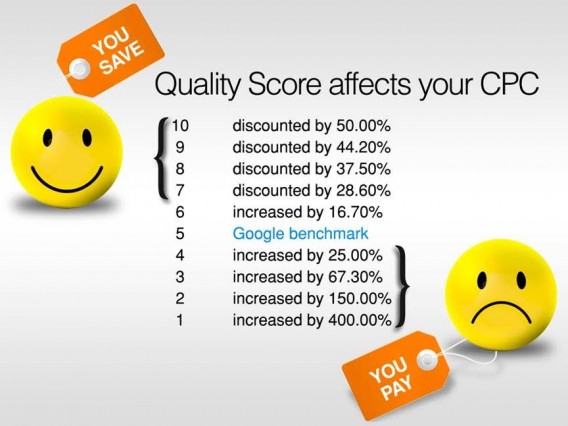
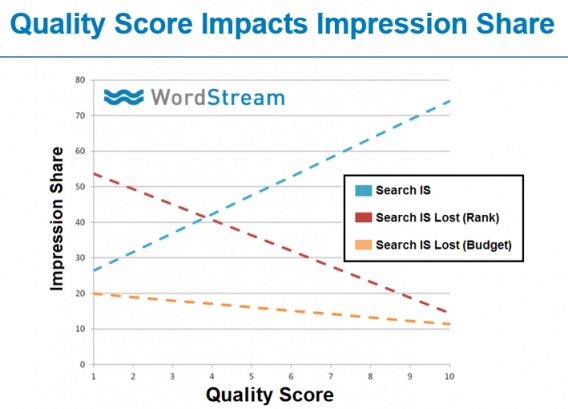
The best way to increase click through rates is to leverage emotional triggers in ads. It’s the same thing that blog headline writers do to get people to click on their tweets and blog posts.”
It’s a simple concept: The higher your CTR, the less you pay and the more your ad is shown. If you have a quality score of 10, you’re paying only 50% of the usual CPC.
Why? Because Google values quality. They don’t want to annoy their visitors with irrelevant, spammy ads. They want to deliver helpful search results and helpful ads.
According to Larry, the best way to increase your CTR (i.e. write better ads) is to insert some emotion into your copy.
Helen Edwards, who also works at WordStream, explains her step-by-step process for writing emotional ads…

Helen Edwards, WordStream:
“Here are the steps I follow to write high-performing emotional ads for my clients:
Step 1 – Who is your customer? Is she a working mother? A hippie yoga kale eater? A high society trust fund baby?
Step 2 – What persona do you want to take on in relation to your target market? Bearer of bad news? Hero/Villain dynamic? The comedian? The feel good friend?
Step 3 – Write emotionally charged ads from the standpoint of the chosen persona.” (via WordStream)
The four appeals she focuses on are: anger, disgust, affirmation, and fear.
Of course, those aren’t the only emotional appeals you can use. In The Advanced Guide to Emotional Persuasion, you’ll also learn how to use sadness, anxiety and awe to persuade.
What matters is that you evoke emotion. You stand out from the other search results, from the noise of Facebook, from the content of a site, etc.
Conclusion
PPC is a simple game that gets more complicated the more you play, just like Blackjack. [Tweet It!] If you bet on the wrong ad or lose focus of the bigger picture, you could lose serious cash.
If you want to craft PPC ads that are sought after, make sure…
- You account for the differences between search, display and social traffic.
- You create data-driven personas and tailor your ads for your specific audience.
- You’re optimizing for more cash in the bank, not a higher CTR.
- You’re using “Target and Bid” for remarketing display ads.
- You’re using “exact match” and bid modifiers for short-tail head terms (vs. “broad match”).
- You conduct quality assurance on your conversion funnel, site and analytics.
- You write ads that evoke emotion to improve your quality score and bring down your CPC.

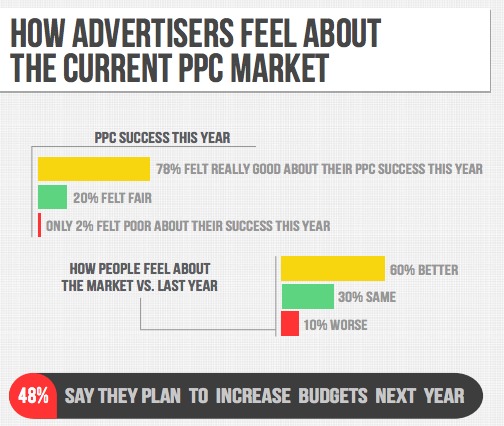
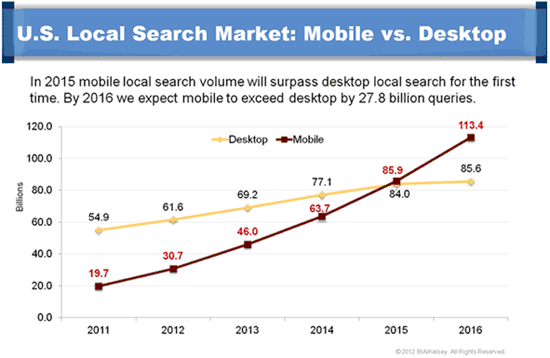
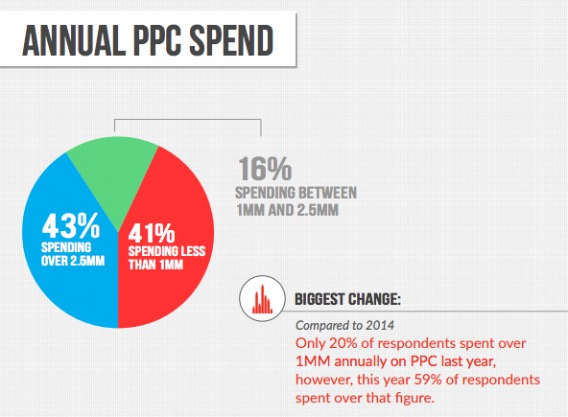




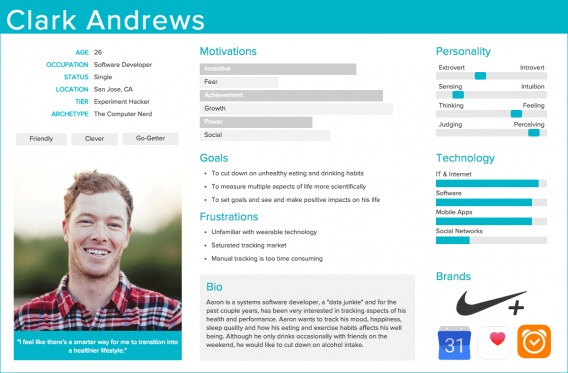






I am struggling to find where you can see if you have set the targeting setting to “target and bid” instead of “bid only”.
Can you point me in the right direction
Hey Gary! It’s in the Flexible Reach panel. This might help…
https://support.google.com/adwords/editor/answer/48539